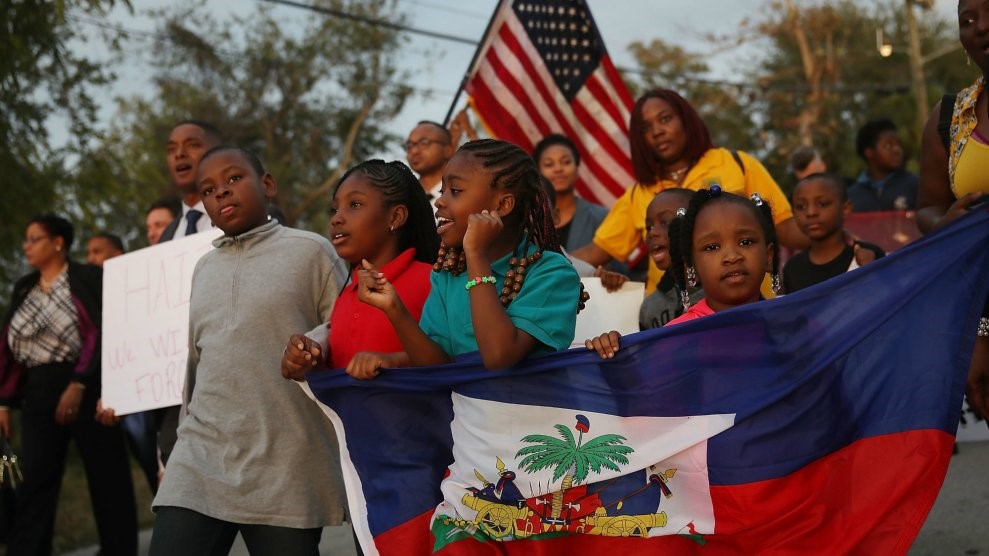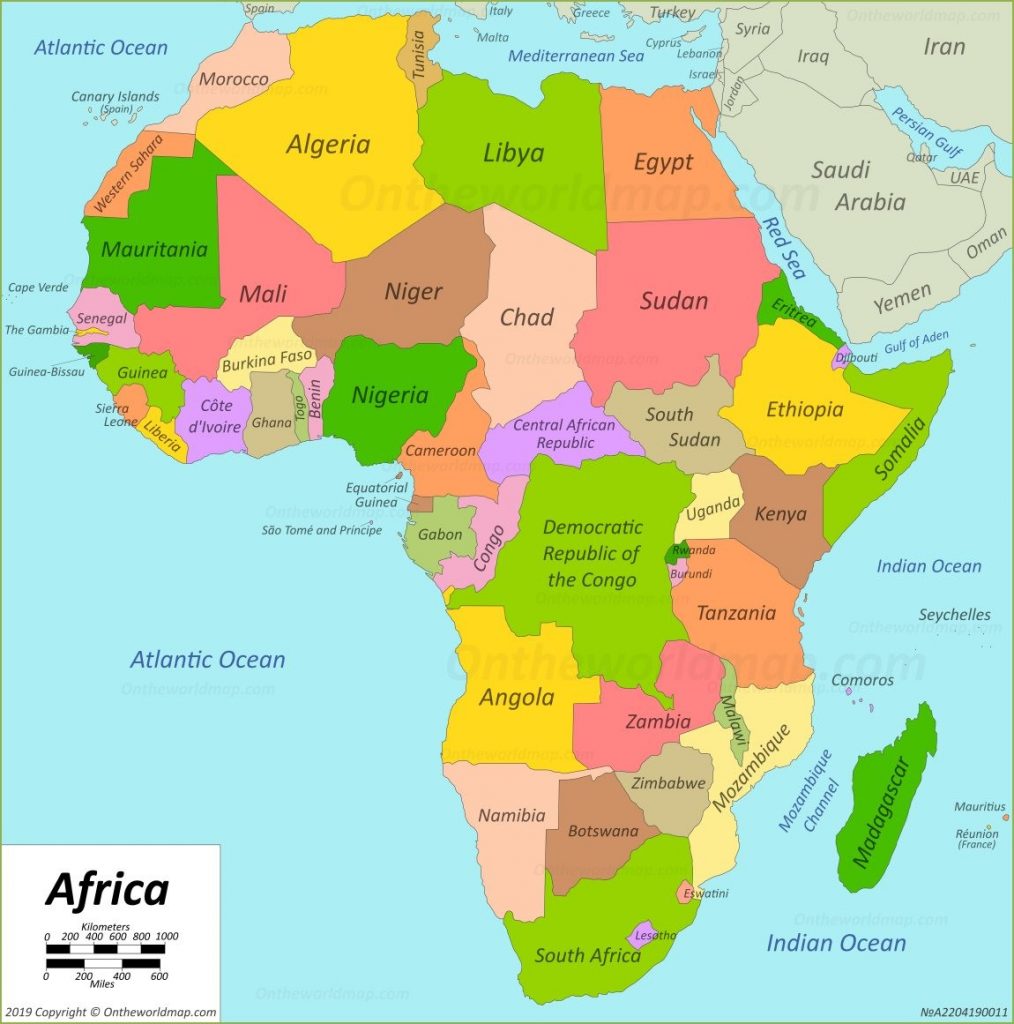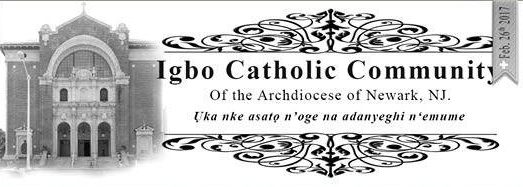African American
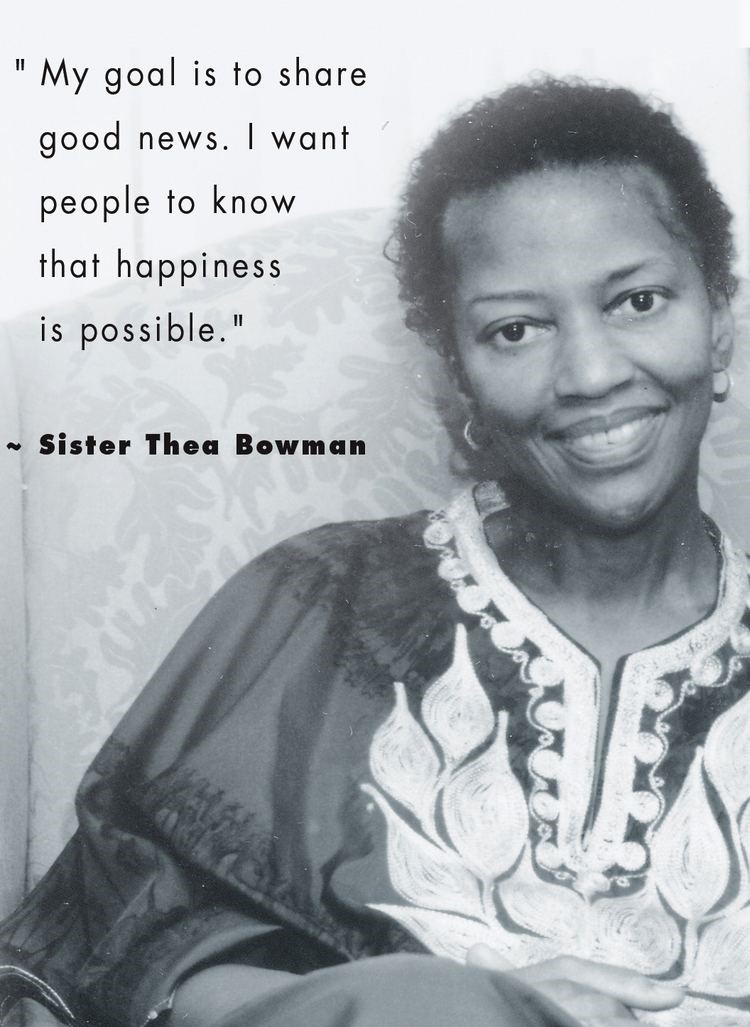
In 1989, sister Thea Bowman visited Seton Hall University and addressed the American Bishops Conference meeting there. In her talk she spoke of the experience of the Black Catholics in the United States. At the end, the bishops joined her in singing “We shall Overcome.”
What does it mean to be Black and Catholic? It means that I came to my church fully functioning. That doesn’t frighten you, does it? I came to my church fully functioning. I bring myself, my back self, all that I am, all that I have, all that I hope to become, I bring my whole history, my traditions, my experience, my culture, my African American song and dance and gesture and movement and teaching and preaching and healing and responsibility as a gift to the Church.
— Excerpt from Sister Thea to the American Bishops, June 17, 1989
As recounted in an earlier chapter, Bishop Walsh was aware of the “Great Migration” of African Americans. He established three personal parishes for African Americans: Queen of Angels (1930) in Newark, Christ the King (1930) in Jersey City, and Saint Peter Claver (1932) in Montclair. The main impetus for these parishes came from groups of African American Catholic women who continually petitioned for better pastoral care. When Walsh administered the sacrament of Confirmation at Christ the King in 1932, the number of confirmands was 223. By 1937, the number of parishioners reached 1,675. Queen of Angels flourished. Walsh baptized the 1,000th convert there in 1935. By the end of 1937, the total number of parishioners was 2,000.1
Over the years, many African Americans moved from the cities and joined parishes throughout the Archdiocese. Queen of Angels in Newark declined in numbers and closed. However, Saint Peter Claver in Montclair and Christ the King in Jersey City continue to serve the African American community and also recently-arrived immigrants, many from Haiti and from Spanish-speaking countries.

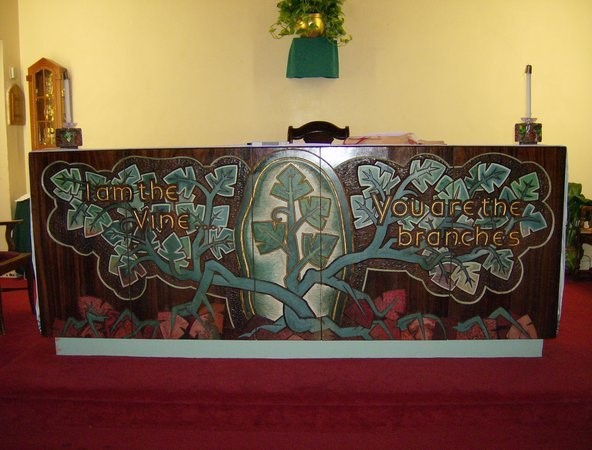
Haiti
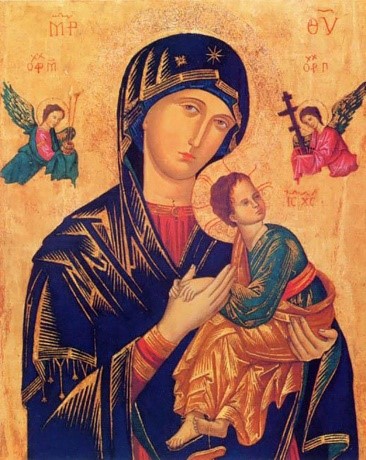
Patroness of Haiti
In recent years, the United States has seen an upsurge in Haitian immigration. Official U.S. immigration statistics record fewer than 4,500 Haitian immigrants in the period 1951-1960, but about 34,500 in the following ten years. By the decade of 1991-2000, the figure topped 179,600. In addition to those admitted as legal immigrants, tens of thousands of Haitians have, at various times, attempted to gain admission to the United States as refugees. As of 2000, according to United States government estimates2, about 76,000 Haitians lived within the borders of the United States as undocumented migrants.
Haitian immigration to the United States remained negligible until the latter half of the 20th century; in fact, 1932 is the first year Haitians were counted separately in immigration statistics, and fewer than 200 arrived during the remainder of that decade.
Haitian Immigration to the United States
| 31-40 | 41-50 | 51-60 | 61-70 | 71-80 | 81-90 | 91-00 | 00-10 |
|---|---|---|---|---|---|---|---|
| 200 | 1,000 | 4,442 | 34,499 | 56,335 | 138,379 | 179,644 | 178,000 |
During the early 1960s and the 1970s, many Haitians migrated to the United States to escape the oppressive conditions during the dictatorships of François “Papa Doc” and his son Jean-Claude “Baby Doc” Duvalier. Political unrest, economic strains, and natural disasters have supplied additional reasons for people to emigrate.3 According to the 2010 United States Census, there were 881,488 Haitian Americans living in the United States.
Following Florida, New York, and Massachusetts, New Jersey has the fourth largest Haitian population, 49,340. The largest Haitian communities are in Irvington, (6,090), Orange (3,512), East Orange, and Newark. Other cities with significant Haitian populations are Elizabeth, Bayonne, and Jersey City. There is also a growing population in the suburbs of Essex and Union Counties in Roselle, West Orange, Maplewood, and Union.4
Of the Haitians in New Jersey, 72 percent live within the archdiocese of Newark. According to Pew studies, 57 percent of Haitians are Catholic, but the number of practicing Catholics is lower. Active proselytizing among Haitians at home and in the United States is reducing this number.5
As the Haitian migration grew, priests form Haiti came to the archdiocese as adjunct priests and others were incardinated into the archdiocese. In addition, diocesan clergy learned Creole and ministered to the Haitian community as well. Today, Mass is celebrated in Creole in six parishes that include large Haitian communities: Holy Spirit/Our Lady Help of Christians in East Orange, Holy Rosary/Saint Michael in Elizabeth, St. Leo in Irvington, Saint Patrick and Assumption/All Saints in Jersey City, Saint Peter Claver in Montclair, and Our Lady of Mount Carmel in Orange. Most parishes with a large Haitian community also have immigrant communities from other cultures. This is a problem for many Haitians who feel as though they are not have “their own” church. Often, parishes with a Haitian population celebrate the Sunday liturgy in three, even four languages.
Haitian Population in the Archdiocese of Newark
| NJ | Bergen | Essex | Hudson | Union | RCAN | ||
|---|---|---|---|---|---|---|---|
| 2010 | 58,816 | 2,089 | 22,452 | 2,769 | 15,301 | 42,611 | |
| 2017* | 63,687 | 1,817 | 23,683 | 3,469 | 14,788 | 43,757 |
Decennial dates are Official United States Census
*United States Census Bureau Estimate
Africa
The first Africans to come to what would become the United States were brought as slaves. Although African slavery is most often associated with the southern states, slavery was legal in many of the northern states until the years just before the beginning of the Civil War.
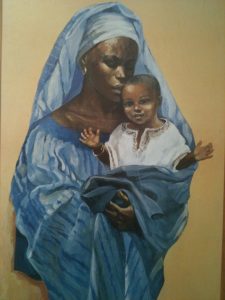
The African-American population increased in New Jersey during the “Great Migration” from 1916 to 1970 when more than 6 million African Americans left the rural south for the urban northeast, the Middle West, and west.
After the immigration reform of 1965, significant numbers of sub-Saharan Africans migrated to the United States. The numbers increased markedly after 1990. This trend began after mid-20th century decolonization, as many Africans moved to the United States to obtain higher education and to escape poverty. The number has risen steadily over time. Originally, many of these migrants came with the sole purpose of advancing themselves before returning to their respective countries. Nevertheless, many migrants never returned to their homes in Africa. It is estimated that the current population of African migrants in the United States is about 2.1 million.6
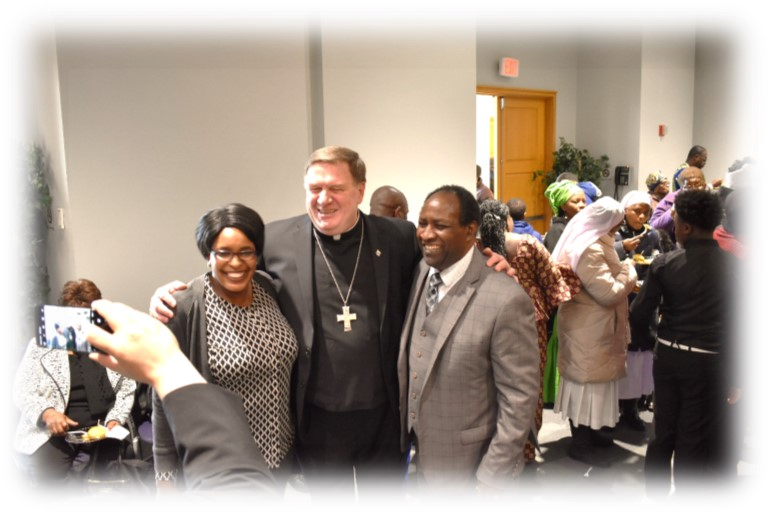
Recent census statistics7 for New Jersey give the estimated numbers of major sources of African migration as:
Africans in New Jersey
| 2010 | 2017* | |
|---|---|---|
| Nigeria | 16,749 | 20,720 |
| Ghana | 12,347 | 10,744 |
| Kenya | 4,977 | 4,203 |
| Cameroon | 906 | |
| Cabo Verde | 972 |
The largest group is Nigerian. Only Texas, New York, Georgia, Maryland, and California have more Nigerians than New Jersey. It is difficult to get accurate population estimates. Nigerian diaspora sources give higher numbers than others. One source also gives higher numbers but states that in recent years many Nigerians have left New Jersey.8 Similar sources note that a large proportion of Nigerians live in the four counties of the archdiocese of Newark, particularly in the city of Newark.
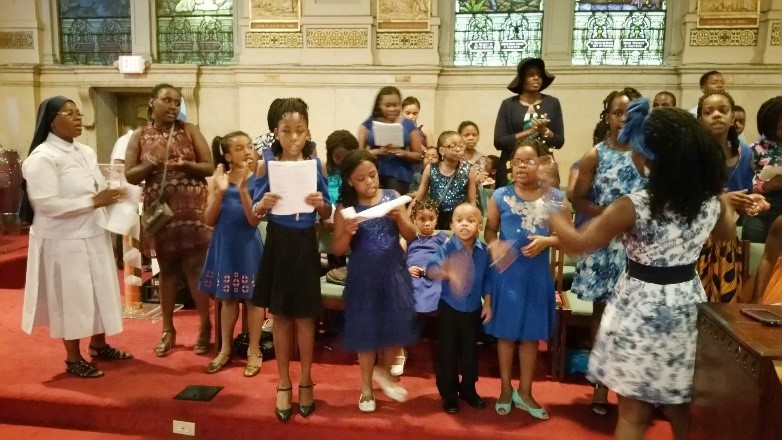
Nigerians in the Archdiocese of Newark
United States Census Estimate 2010 and 2017
| NJ | Bergen | Essex | Hudson | Union | RCAN | ||
|---|---|---|---|---|---|---|---|
| 2010 | 16,749 | 732 | 6,232 | 982 | 2,687 | 10,633 | |
| 2017 | 20720 | 782 | 8,479 | 703 | 1,768 | 11,732 |

Studies have shown that Nigerians have the highest level of academic achievement of all immigrant groups in the United States, 40 percent holding bachelor’s degrees, 17 percent master’s degrees, and four percent doctorates.9
Sources disagree about the percentage of Nigerians that are Catholic. The estimates generally are in the range of 20 percent. The great number of conversions in Nigeria and other parts of Africa make it difficult to develop current or even recent reliable statistics.
There is not a great deal of literature about African migrants to the United States as they have arrived in significant numbers only in comparatively recent years. In the archdiocese of Newark, the largest African migrant population is Nigerian, and for this national group we can break down the number into counties. The chart above shows that almost two-thirds of the Nigerian migrants in New Jersey live in the archdiocese of Newark.
Many Nigerians simply participate in a neighborhood parish near their homes. However, Blessed Sacrament Parish in Newark is essentially a Nigerian parish that celebrates Mass in Igbo once a week. Large numbers of Nigerians also worship weekly at Newark Abbey. Another distinct Nigerian congregation worships weekly in the chapel of Seton Hall University.
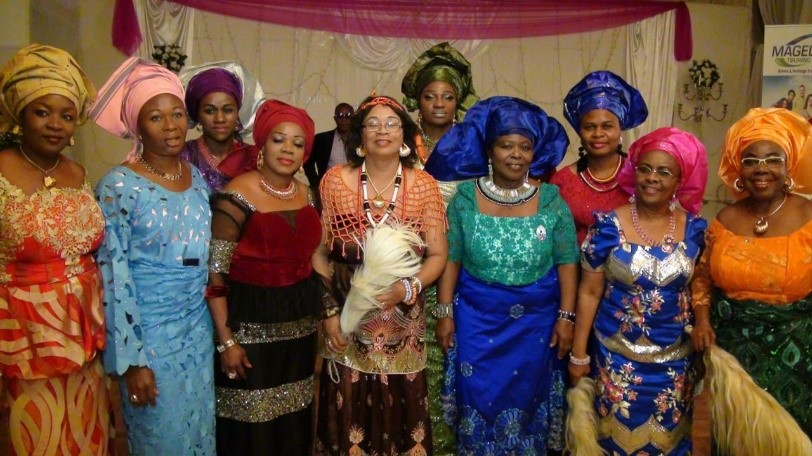
Over the years, a number of Nigerian priests came to New Jersey to further their education. They remained to minister and many have been incardinated. In addition, several young men of Nigerian origin have been ordained as priests of the archdiocese of Newark.

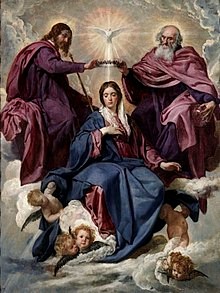
The estimates of the Catholic percentage of the populations of Ghana and Kenya, the second and third largest African groups in New Jersey vary, partly due to the rapidly changing demographics in these and most other Africa countries. Reasonable estimates are that Ghana is 13 percent Catholic and Kenya is 33 percent Catholic.
Because the numbers of African immigrants in New Jersey is comparatively small, except for Nigerians and Ghanaians, it is difficult to obtain precise statistics for their presence in the archdiocese of Newark. However, their numbers are probably larger than those taken from several sources and given in the chart below.
Ghanaians in the Archdiocese of Newark
United States Census Estimate 2010 and 2017
| NJ | Bergen | Essex | Hudson | Union | RCAN | ||
|---|---|---|---|---|---|---|---|
| 2010 | 12,347 | ||||||
| 2017 | 10,744 | 1,043 | 3,486 | 539 | 772 | 5,840 |
| New Jersey 2017 Approximations | |
|---|---|
| Kenya | 5,000 |
| Ethiopia | 2,000 |
| Senegal | 1,000 |
| Cabo Verde | 1,000 |
| Cameroon | 1,000 |
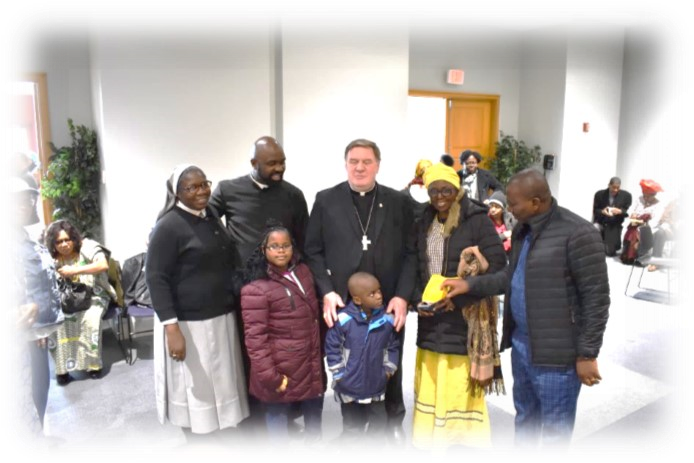
Parishes in the Archdiocese of Newark with African American, African, and Caribbean faithful10
| Bergen County Bergenfield, St. John the Evangelist Englewood, St. Cecilia Hackensack, Holy Trinity Leonia, St. John the Evangelist Teaneck, St. Anastasia Tenafly, O.L. of Mount Carmel Essex County |
Hudson County Jersey City, Christ the King Jersey City, O.L. of Sorrows Jersey City, O.L. of Victories Jersey City, St. Aloysius Jersey City, St. Anne Jersey City, St. John the Baptist Jersey City, St. Patrick/Assumption-All Saints Jersey City, St. Paul the Apostle Union County |
«VIII. Asia Vietnam, China, India« : »X. Continued Migration from Europe and Brazil»
Footnotes
- Jena Gaines. Haitian Immigration, Broomhall PA, 2004. passim.
- Jena Gaines. Haitian Immigration, Broomhall PA, 2004. passim.
- https://en.wikipedia.org/wiki/Haitian_Americans
- https://en.wikipedia.org/wiki/Haitian_diaspora
- http://www.globalreligiousfutures.org/countries/haiti#/?affiliations_religion_id=26&affiliations_year=2010®ion_name=All%20Countries&restrictions_year=2016
- https://en.wikipedia.org/wiki/African_immigration_to_the_United_States
- http://nj1015.com/all-the-nations-where-nj-immigrants-come-from-and-where-in-nj-they-now-live/
- ipfs.io
- Nigerian Standard
- Imani (Faith), Bulletin of Archdiocese of Newark Office of African American, African and Caribbean Apostolate


